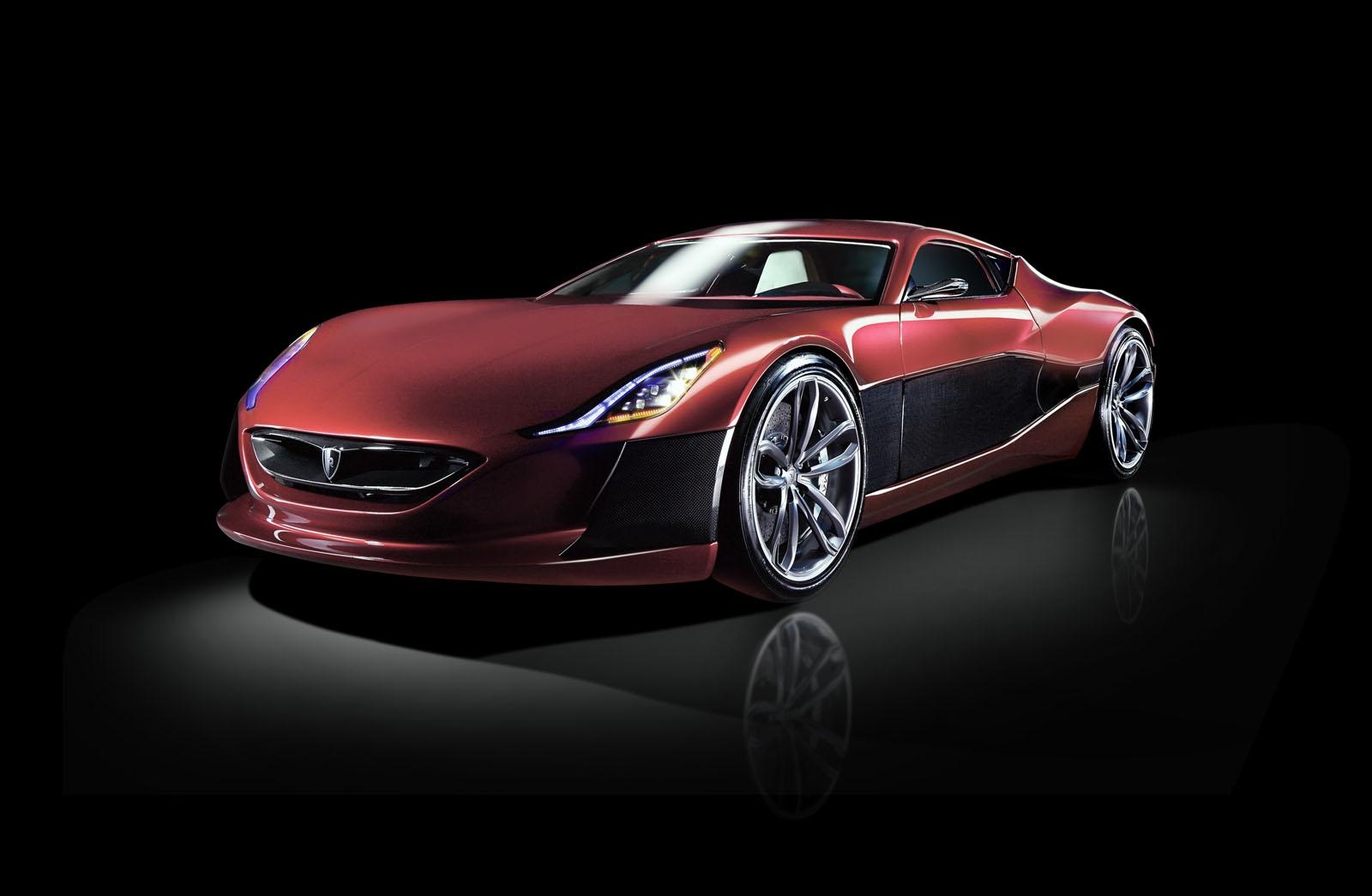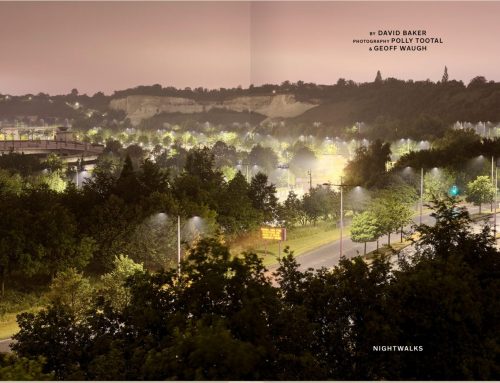Rimac’s $1m electric car is 50 per cent faster than Tesla’s Roadster. But can it overtake its rivals?
Wired, April 2013
Croatian entrepreneur Mate Rimac, 25, is sitting behind the wheel of the Rimac Concept_One, a prototype electric sports car he has designed and built — and with which he hopes to take on not just Tesla Motors, but Ferrari, Bugatti, Pagani and Lamborghini. “I am building not just the best electric supercar, but the best supercar,” he announces. “A supercar for the 21st century.”
The car is long and low and superbly finished. It has a handsome, two-tone carbon-fibre exterior and a luxury interior designed by supercar specialists Vilner Studio, which has done work for, among others, Bentley, Audi and BMW. The infotainment/GPS system doubles as the instrumentation panel. There are tiny television cameras instead of conventional mirrors (“more aerodynamic that way,” Rimac says), and quirky, characterful touches such as self-closing doors and tie-shaped covers for the recharging ports — “because,” he says, “the tie was invented in Croatia.”
But it is the car’s power that sets it apart. With 1,000hp spread across four electric motors (one for each wheel), the Concept_One can accelerate from 0-100kph in 2.8 seconds and reach a maximum speed of 300kph with barely a touch of the pedal. And, as Rimac executes some doughnuts outside his factory in Sveta Nedelja, west of Zagreb, the g-forces pin you to your seat.
Rimac went into the electric-car business almost by accident. Aged 18, he was road racing an old BMW when the (petrol) engine gave out. “I had a choice,” he says. “Put in another engine; turn it into an electric commuter car; or have a go at making a very fast electric car.” He chose the last, stripped the vehicle down and installed a battery, a motor controller and a 200hp electric motor, and entered it into races against his petrol-powered opponents. After some modifications — the car is now in its “sixth evolution” and still being raced — he started to win. “Eventually,” he says, “the media started to notice this silent car beating the others.”
Engineers, says Rimac, love electric cars for their simplicity and efficiency: “Electric motors are smaller and lighter and much more efficient. There’s just one moving part. They’re 90 percent efficient compared to 20 per cent for gas [petrol] engines. There’s no oil to change. And the power delivery is instant. In a 500hp gas engine, to overtake you have to shift three gears down. On an electric car you just put your foot down.”
Rimac’s aim is to sell 88 Concept_Ones, for $1m (£600,000) each, over the next five to seven years. His obvious competition is California’s Tesla Motors — and he would have loved to have used the name: Nikola Tesla was born 200km south of the Rimac factory, in the Lika mountains in what is now Croatia. But he says he has a bigger vision than Tesla’s Elon Musk’s. “I consider Tesla as leading technology,” he says, “but we are different. We set out to make the best and don’t care about cost. If we can get a two percent increase in performance for another €1,000 (£850) on the price, we’ll do it. We’re not focused on being a mainstream manufacturer.”
Rimac began his project in 2009 and to start with he found it hard to be taken seriously. He had no experience in car manufacturing (and Croatia has no motor industry of its own) and his ideas were widely judged to be beyond realistic. “When we started, there were no parts for the car we wanted to build,” he says. “It was out of scale in terms of power and speed, and manufacturers said it was impossible.” Even the most banal components proved difficult to source. One German parts manufacturer wanted €20 million (£17 million) just to start doing business and quoted him €400,000 (£340,000) merely to access its supply of windscreen-washer nozzles.
“We realised then that we had to design everything ourselves — the batteries, the motors and the controllers,” he says, “and then build the car around that.” He set up the factory in Sveta Nedelja and recruited a team of young and hungry engineers: half of the 20-strong workforce came to Rimac straight from university. Though short on experience, what Rimac could offer was ingenuity. At 16, he had won numerous competitions with an electronic glove that could replace a keyboard and mouse for people working in difficult conditions. At 17, he developed an anti-blindspot system for car mirrors that was taken up by a number of manufacturers (helping to fund the BMW and his road racing). So when he ran into difficulties sourcing parts for the Concept_One, he began to make them himself. He bought some second-hand aluminium-milling machines, and set about building a prototype. It took him two years but, by 2011, he had a working version of his supercar, virtually all of whose components, from the aluminium-and-carbon-fibre chassis, through the battery pack, electronics and electric motors, to the switches on the dashboard, were designed and manufactured in-house.
The car is ready for production — “the motor is almost perfect,” he says — though he shares with all electric-car manufacturers a frustration with the limits of today’s batteries. The Concept_One can cover about 600km between charges if driven gently, or 150km in a race, but Rimac would like to see those figures significantly increased. “Everyone is waiting for a huge breakthrough,” he says. The Rimac plant is still more of a workshop than a factory. Almost everything is made by hand and, when wired visited, two men were manually filing down hundreds of aluminium clips that will hold together a single battery pack. Customers are lining up, however. In January 2013 Rimac delivered a one-off, slightly modified version of the car to another manufacturer and has “several” individual customers who have expressed interest. But he is reluctant to give numbers and name names. His natural market is super-rich car collectors who like to feel exclusive. They especially value a low vehicle-identification number, he says, and like to be near the front of the queue.
What he needs in order to go into full production is investment, and this has proved trickier than finding customers. In 2010 a representative of the Abu Dhabi royal family, with an offer of “significant” investment, approached him. The deal fell through after two years’ negotiations when the sheikhs made it a condition that he relocate to the Gulf. In the meantime, the factory has an annual turnover of about €1 million (£850,000) and is just about breaking even by supplying white-box parts to other manufacturers converting their existing petrol models to electric.
“Mate has a really credible prototype,” says Ivo Spigel, cofounder of Zip, Croatia’s first startup incubator, “and for all of us in Zagreb it would be super-exciting to see his workshop develop into an assembly shop. But making a prototype is one thing, selling it is another and selling it in volume a third step. He is not some ordinary startup that needs seed funding. An automotive startup needs €10 million (£8.5 million), and that is a lot harder to get. And the past and present governments have done everything they can to make it hard for business.”
Despite these hurdles, Rimac has no plans to move. He has had offers from other companies looking to buy him out, but he says he is in for the long term. “It’s a patriotic thing. We don’t have much in Croatia. I want to set up a tech business here that makes real things. Ninety-eight percent of the startup world is apps and sites. People have forgotten how to work hard. If a website crashes, no one gives a shit. But if a car breaks down, someone can die.”
Meanwhile he has his sights set on the established supercar marques across the Adriatic. “In five years’ time, we will be about the size of Pagani. Then we’ll be like Lamborghini. And then, in 15 years, we’ll be the size of Ferrari. I want to push the limits of sports cars and be the best in this field. And to remain in Croatia.”






